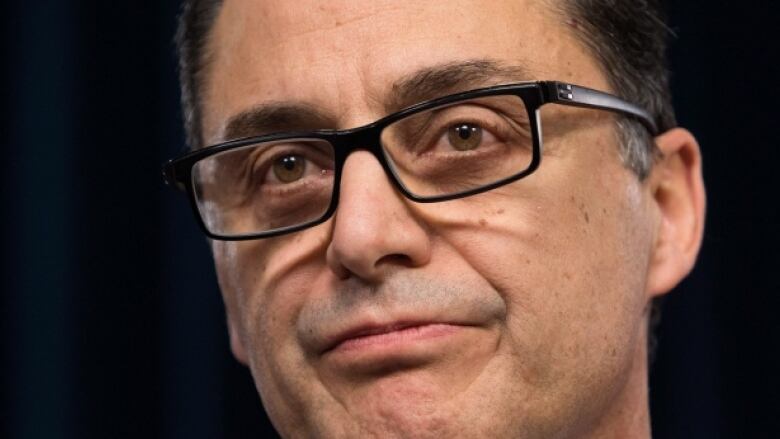Alberta's growing debt explained in a few key graphs
We're not in uncharted waters yet but soon could be, as debt continues to pile up

Despite an expected increase in oil revenues, Alberta's 2017 budget is again awash in red ink, with a projected deficit of $10.3 billion.
This comes after the $10.8-billion deficit forecast for the current fiscal year, which ends March 31.
- Alberta's debt soaring to $45 billion, but budget has no big cuts, no new taxes
- Get the latest Alberta budget news, reaction, video and analyses
The numbers may seem staggering and they certainly represent a massive change from the province's recent past, but these are not uncharted waters for Alberta.
The province ran bigger deficits, as a proportion of its economy, in the late 1980s and early 1990s.
This interactive graph depicts Alberta's budget balance, as a percentage of GDP, since 1981:
What'sdifferent now, however, is the financial trajectory Alberta finds itself on.
The province is on track to keep racking up debt for the next several years, dragging its net financial position ever deeper into the negative side of the ledger.
Alberta was once the only province in Canada to have a net-positive financial position more assets than liabilities but that ended in the current fiscal year and the downward trend will continue for the foreseeable future.
The provincial government says the rate of debt accumulation will slow, but acknowledges Albertamay lose its nation-leading financial position in the coming years.
The 2017 budget document states the government is committed to maintaining "one of the lowest" debt-to-GDP ratios in the country not the lowest.
Indeed, the budget projections suggest Alberta's net financial position will plumb new depths in the coming years, dipping even deeper into negative territory than the province saw during the early 1990s.
This interactive graph depicts Alberta's net financial position, as a percentage of GDP, since 1981:
Astute readers will notice a pattern in the above two graphs the upward and downward trends tend to mirror the booms and busts in the prices of oil and natural gas.
Natural resource revenues have, of course, played a major role in whether the province has run deficits or surpluses, and that correlation continues today.
Royalties, land leases and other revenues related to the oil and gas industry have made up a major chunk nearly half in some years of the province's income for decades,but those revenues have dried up recently.
The annual haul reached a low point in 2016/17, when non-renewable resources accounted for just 5.7 per cent of government revenues.
That amount is expected to improve in the upcoming fiscal year, which begins April 1, but the budget projections still put the amount well below historical levels.
This interactive graph shows non-renewable resource revenues in Alberta as a proportion of total government revenue, and in absolute dollars, since 1981:
Of course, revenues are only one half of the equation.
Expenses are the other, and Alberta's NDP government has steadfastly asserted it won't slash spending to balance the books more quickly, which it sees as the wrong move during a downturn.
Rather, Finance Minister Joe Ceci said Thursday the plan to eventually tame the deficit will involve reducing the rate of spending growth below that of expected revenue growth.
"We have a plan to reduce the deficit year over year and return to balance," he said.
"This will be achieved by keeping spending below population (growth) plus inflation."
By Ceci's projections, it will take until 2023-24 for that plan to return Alberta's finances to a surplus position.
And then, he said, it would be time to start paying down the debt.












_(720p).jpg)


 OFFICIAL HD MUSIC VIDEO.jpg)
.jpg)



























































































